#South American cichlid
Text
Petco was out of frozen spirulina and brine shrimp cubes, so I bought frozen spirulina and mysis shrimp cubes instead. This one let me know through hesitation and then violent spitting that it was not an acceptable alternative. 😂
Meanwhile the dogs are staring at me in an accusatory manner and wondering why they never get frozen food when they would actually appreciate it.
96 notes
·
View notes
Text
South American Cichlid Fish for Sale
Discover a stunning array of South American Cichlid Fish for Sale at Monster Aquarium. Dive into the vibrant world of these exotic aquatic wonders. From colorful species to rare finds, we offer a diverse selection. Enhance your home aquarium with these captivating additions. Explore the beauty of South American Cichlids with Monster Aquarium and bring a slice of the Amazon into your aquatic haven today.
0 notes
Photo
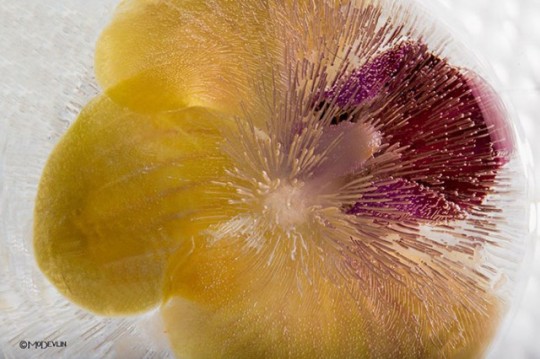
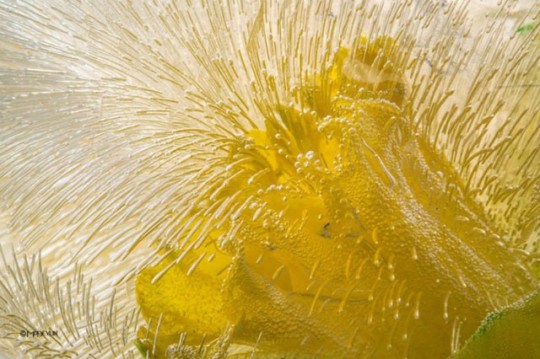

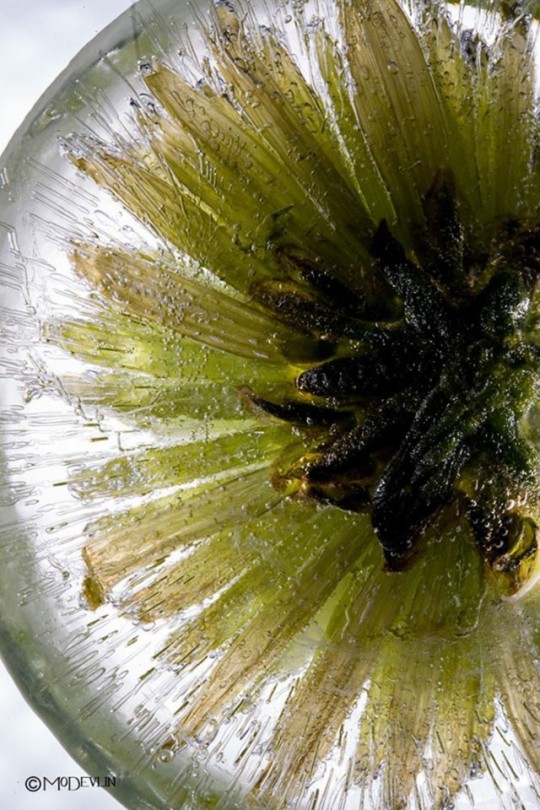

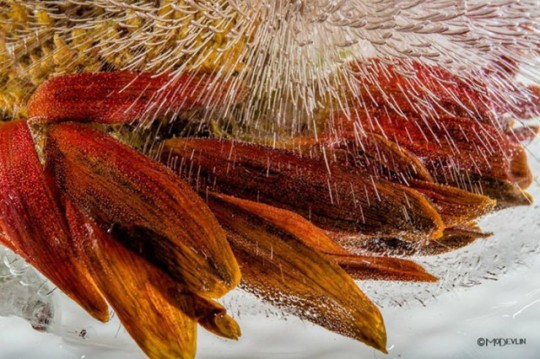
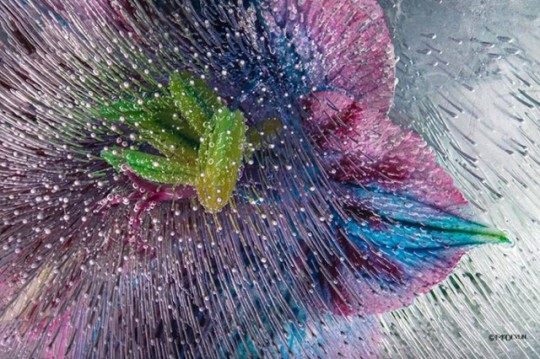
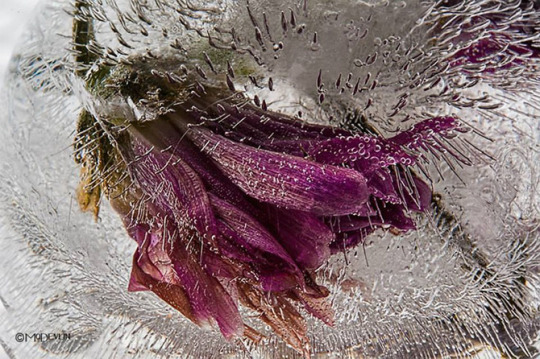
Mo Devlin (USA) - Frozen Posies
Over his thirty years in the hobby, American photographer Mo Devlin has successfully bred many of the Central and South American cichlid fishes. His passion for the aquarium hobby is only rivaled by his love of photography.
Recently he develops the love of taking pictures of frozen flowers with a macro lens to create abstract compositions. He captures different patterns, light, texture and details of each frozen flower.
https://www.fubiz.net/.../03/05/details-of-frozen-flowers-2/
20 notes
·
View notes
Text
My 75 gallon Central African tank!
Stocking and such below
Fish/Inverts
Senegal Bichir (Polypterus senegalus) x2
AKA Dinosaur Bichir. They get 9-12 inches, they're badass predators but the tankmates will be safe, too big to be aggressed upon. I've got one albino and one normal one. Their names are Bulk and Skull, like from Mighty Morphin' Power Rangers. They have true lungs and can breathe people-air! It's cool to watch them do it.
Leopard Bushfish (Ctenopoma acutirostre) x1
AKA Spotted Climbing Perch. Gets about 5-9 inches but is a slow grower, so considering moving him to a 20 long with one of my Krib pairs and my Synos when I eventually move them and he can return to the 75 when big. In the wild these guys drift along until they're close enough to nab some prey that thinks they're just a leaf. His name is Demi because of the famous Demi Moore photo.
Peters's Elephant Nose Fish (Gnathonemus petersii) x1
AKA Ubangi Mormyrid. By far my most interesting guy. He's an electric fish, and that silly proboscis is called a Schnauzenorgan, covered in electroreceptors, which he uses to snuffle around for worms. He has an organ in his ass that generates an electric field. No, really. They've also got the highest brain to body oxygen usage ratio of any vertebrate. He's super cute and full of personality! Wild caught, too, so this guy traveled across half the planet to get to me. In ancient Egypt these guys were believed to have eaten the penis of Osiris and were worshipped in the city of Oxyrhynchus.
Kribensis (Pelvicachromis pulcher) x4
AKA Rainbow Cichlid. An African cichlid that's not an asshole? Sign me up. Well, they're still assholes but only to each other. You probably could spot a full grown 4" male, a pair of 2" female and male, and a 1.5" female in the video if you look closely. Incredibly beautiful fish, very aggressive when they breed, so I plan to separate one pair of kribs into a 20g and leave the other in the 75. One of the rare instances where the females are the flashier ones!
Congo Tetra (Phenacogrammus interruptus) x6
One of the larger tetras kept in aquaria, they get about 4 inches or so too. Semi-aggressive, which here just means they steal everyone's food and get fat, so I have to distract them with flakes on one side of the tank so everyone else can eat. Beautiful, shiny blues and reds and clear fins. Love 'em. Way overpriced for tetras though, like 8 bucks per! Comparably sized South American tetras are still $2.50 at PetSmart.
African Butterfly Fish (Pantodon buchholzi) x1
You've probably seen them in nature documentaries. They're those guys that float at the waters surface looking like a butterfly or a leaf until they see some unsuspecting bug above the water and then BAM! They jump way up and snatch 'em. Relative of the Arowana. Beautiful little guy, goes bananas bonkers when I feed him crickets.
Upside-Down Catfish (Synodontis nigriventris) x3
AKA Blotched upside-down catfish. Adorable little guys with naturally tubby bellies. They're friendly and I love them, though they'll be moving to the 20 gallon long with kribs and Demi. They really do swim upside down!
FALSE Upside-Down Catfish (Synodontis nigrita) x2
Ohohoho, you fool, you fucker. You thought you bought upside down catfish, didn't you? Well, now I'm gonna get a foot long and poop a lot and suck the slime coat off your expensive fish and kill them and look so sillycute while doing it. AND I won't even swim upside down. Will be banished to local fish store rehoming tank to be sold under the correct name this time.
Snails (Various sp.) x999999999
I've got Malaysian Trumpet Snails (intentional), Nerites (intentional), Ramshorns (unwanted hitchhikers), and Bladder Snails (unwanted hitchhikers).
Plants
Jungle Val (Vallisneria americana)
AKA Eelgrass. Not technically African but it was cheaper than the African-native Corkscrew Val.
Narrow Crinum (Crinum calamistratum)
AKA African Onion Plant. Slow growing and small so far but looks cool fully grown.
African Water Fern (Bolbitus heudelotii)
AKA Congo Fern. Really sickly and shitty from PetSmart but should improve.
Cameroon Moss (Plagiochilaceae sp.)
Really pretty moss I attached to some driftwood in small bunches, should grow in soon enough.
Anubias (Anubias heterophylla, Anubias barteri)
Probably the most well-known African aquatic plant besides lucky bamboo, you'll find this in a TON of fish tanks.
Tiger Lotus (Nymphaea zenkeri)
Still just a wee baby, eventually this'll grow into some rockin' red lily pads.
Ammania (Ammannia gracilis)
Beautiful stem plant with red-tipped leaves. Lovely pop of color.
Duckweed (Lemna minor)
Fuck this guy kill this guy. Duckweed hell one million years forever!!!!!!!!!!
Tank Setup
75 Gallon (idk brand) I believe dimensions are 48x18x21
Fluval 407 Canister filter w/ spray bar
Secondary sponge filter with air pump rated for up to 100gal
Tertiary filter running water softener pillow and establishing spare biomedia
Substrate is pea gravel and Black Diamond Blasting Sand, coarse grit.
Wood is California driftwood/ghost wood iirc, got it at a reptile expo.
Light is Finnex Planted+ 24/7 (I just leave it on auto mode)
Heaters are 3 preset tetra 100W heaters. Nothing fancy.
There's caves made out of PVC piping covered with pond foam.
That bag you see is weighing the driftwood down since it's a little new, it still wants to float.
Leaf litter is mostly oak and live oak and a bit of catappa.
This shit all cost me way more than was reasonable at all jesus christ it was pricy but it's so worth it.
10 notes
·
View notes
Text
fish posts on my Instagram explore page are like monster tank, overstocked african cichlid tank, nice goldfish but kept with tropical fish for some reason, tiny rimless tank with beautiful plants and a betta, monster tank, a nice community tank actually, SHRIMP, someone filming their fish that jumped out instead of just putting it back in water immediately, a nice south american cichlid, monster tank again
5 notes
·
View notes
Text
Are Oscars Compatible with Bottom-Dwelling Fish Species?

Introduction
Oscar fish, scientifically known as Astronotus ocellatus, are popular choices for aquarium enthusiasts due to their striking appearance and unique personalities. These South American cichlids are renowned for their vibrant colors and engaging behaviors, making them a favorite in the world of freshwater aquariums. However, one of the most debated topics in the aquarium community is whether Oscars are compatible with bottom-dwelling fish species, often referred to as "Oscar tank mates." In this article, we'll delve into the intricacies of this issue to help aquarists make informed decisions about their Oscar's tank companions.
Understanding Oscars
Before exploring the compatibility of Oscars with bottom-dwelling fish, it's essential to understand the nature and characteristics of Oscars themselves. Oscars are large, carnivorous fish native to the Amazon basin. They can grow up to 12-14 inches in length and have a voracious appetite. Their natural diet consists of smaller fish, insects, and aquatic creatures. Oscars are known for their territorial behavior and can be aggressive when they feel their territory is being invaded.
Oscars are renowned for their stunning colors and patterns, which vary from fish to fish. This uniqueness is a primary reason why aquarists are drawn to them. However, their vibrant personalities can also lead to territorial disputes if their tank companions are not carefully selected.
To know more about : -
Oscar Tank Mates
The debate surrounding Oscar tank mates primarily revolves around the compatibility of Oscars with bottom-dwelling fish species. Bottom-dwelling fish, such as catfish, loaches, and plecos, inhabit the lower regions of the aquarium and serve a valuable role in cleaning up debris and detritus. They are often chosen as tank mates to maintain a clean and balanced aquarium ecosystem.
Compatibility Factors
Size Matters: One crucial factor to consider when choosing Oscar tank mates is the size of the fish. Oscars are large and powerful, and smaller bottom-dwellers may become easy targets or potential prey. Larger bottom-dwelling species, such as larger catfish and plecos, are less likely to be viewed as food by Oscars.
Temperament: Oscars are known for their territorial behavior, especially during breeding or when they feel threatened. Bottom-dwelling fish species that are passive and peaceful may not thrive in the same tank as Oscars. Aggressive or territorial species may clash with Oscars, leading to stress and injury for both parties.
Diet: Oscars are carnivores and will readily consume smaller fish that fit into their mouths. Bottom-dwelling species that are significantly smaller or resemble natural prey may not be compatible. Choosing bottom-dwelling species with similar dietary requirements can help reduce potential conflicts.
Tank Size: The size of the aquarium plays a significant role in determining the compatibility of Oscars with bottom-dwelling fish. Larger tanks provide more space for different species to establish territories and minimize conflicts. A larger tank also helps dilute aggression as there are more hiding spots and retreats available.
Recommended Tank Mates
While it can be challenging to find suitable tank mates for Oscars, there are some bottom-dwelling fish species that can coexist with them under the right conditions. Some popular options include:
Large Plecos: Species like the Common Pleco (Hypostomus plecostomus) can often tolerate Oscars due to their size and armored bodies.
Silver Dollars: Silver Dollar fish (Metynnis sp.) are fast-swimming and can sometimes evade Oscars. However, they should still be monitored closely.
Large Catfish: Some larger catfish species, such as the Synodontis catfish or Red Tail Catfish, may coexist with Oscars.
Convict Cichlids: Convict Cichlids (Amatitlania nigrofasciata) can be compatible with Oscars if introduced when both are young, but this is not guaranteed.
Conclusion
In the world of aquarium keeping, finding the perfect Oscar tank mates can be a challenging endeavor. While these beautiful cichlids are known for their vibrant personalities and striking colors, they also possess territorial tendencies and a carnivorous diet. When considering bottom-dwelling fish species as companions for Oscars, aquarists must carefully assess size, temperament, diet, and tank size to ensure compatibility.
Ultimately, the key to a harmonious aquarium ecosystem with Oscars lies in research, observation, and thoughtful planning. It's crucial to monitor interactions between tank mates and be prepared to make adjustments if conflicts arise. Always prioritize the well-being of your aquatic companions and create an environment where all species can thrive. With the right choices and diligent care, it is possible to achieve a balance that allows Oscars and bottom-dwelling fish to coexist peacefully in your aquarium.
Read more : -
0 notes
Text
Building a Natural Ecosystem: Oscar Fish and Other South American Cichlid Tank Mates
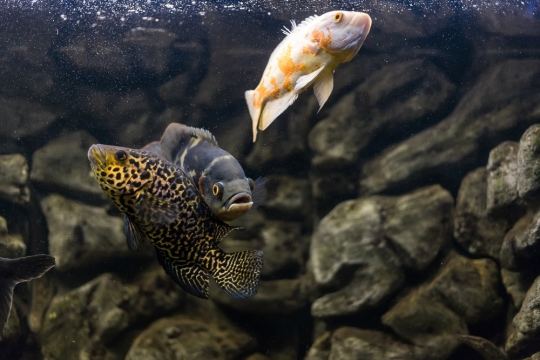
Oscar tank mates: Creating a vibrant and balanced aquatic ecosystem in your home aquarium can be a rewarding endeavor. Among the many possibilities, pairing Oscar fish with other South American cichlid tank mates stands out as a captivating choice. The Oscar fish (Astronotus ocellatus) is a stunning and intelligent species native to the Amazon River basin, while South American cichlids encompass a diverse range of colors, behaviors, and patterns. This article explores the art of building a natural ecosystem by combining Oscar fish with compatible tank mates, all while ensuring their well-being and harmony.
Understanding the Oscar Fish:
Oscar fish, often referred to as "water dogs" or "river dogs," are known for their charismatic personalities and vivid colors. They possess a unique ability to recognize their owners and engage in interactive behaviors. Their appearance can vary widely, featuring colors such as vibrant oranges, reds, and even albino forms. These fish can grow to be quite large, sometimes exceeding a foot in length. With their impressive size and striking beauty, Oscars serve as the centerpiece of many aquarium setups.
To know more about : -
The Importance of Tank Mates:
When it comes to creating a balanced and thriving ecosystem, selecting the right tank mates for your Oscar fish is essential. South American cichlids make great companions due to their shared geographical origins and similar water requirements. However, not all cichlid species are suitable tank mates for Oscars. Aggressive or territorial species might lead to conflicts and stress. Hence, careful consideration and research are crucial when choosing companions for your Oscar fish.
Compatible South American Cichlid Tank Mates:
Angelfish (Pterophyllum spp.): Known for their graceful appearance and distinctive triangular shape, angelfish can coexist harmoniously with Oscars. They tend to inhabit different water levels, reducing the likelihood of direct competition. However, it's essential to provide ample hiding spaces and monitor their interactions initially.
Convict Cichlids (Amatitlania nigrofasciata): Convicts are smaller cichlids that are surprisingly tough and adaptable. They can hold their own against Oscars and even help establish a hierarchy within the tank. Their black-and-white striped pattern adds visual contrast to the aquarium.
Firemouth Cichlids (Thorichthys meeki): Firemouth cichlids are known for their fiery red throats, which they display during courtship and territorial displays. These fish have a peaceful demeanor and can coexist well with Oscars, especially in larger tanks with ample hiding spots.
Severum Cichlids (Heros severus): With their striking green coloration and distinctive body shape, Severum cichlids can be excellent tank mates for Oscars. They are generally peaceful and do well in larger aquariums that provide plenty of territories.
Blue Acara (Andinoacara pulcher): This colorful cichlid species showcases hues of blue and green, making it a visually appealing addition to your tank. Blue Acaras are relatively peaceful and can thrive alongside Oscars if given sufficient space.
Creating a Harmonious Environment:
While selecting compatible tank mates is a crucial step, creating a harmonious environment involves more than just adding fish to the tank. Factors such as tank size, decoration, and water parameters play pivotal roles in maintaining a balanced ecosystem. Provide hiding spots using rocks, caves, and plants, which help reduce stress and offer territories for each fish. As South American cichlids appreciate warm water temperatures (around 75-82°F or 24-28°C) and slightly acidic to neutral pH levels, ensure that your tank conditions align with their preferences.
Observation and Adaptation:
Introducing new fish to an established tank requires patience and careful observation. Initial territorial disputes or chasing behaviors are not uncommon, but if aggression becomes excessive, it might be necessary to rearrange decorations or provide more hiding spots. Monitoring the interactions and making adjustments as needed can help maintain a peaceful community.
In conclusion
Building a natural ecosystem that combines Oscar tank mates with compatible South American cichlid tank mates is a rewarding endeavor for aquarists. The careful selection of tank mates and the creation of an environment that caters to their needs can result in a visually stunning and behaviorally intriguing aquarium. Remember that each fish has its unique personality, so being attentive to their behaviors and making necessary adaptations will ultimately contribute to the success of your aquatic masterpiece.
Read more : -
0 notes
Text
Unveiling Hidden Gems: Exploring the Depths of South American Cichlid Species

South American cichlids are a diverse and captivating group of fish that have captivated aquarists for years. From their vibrant colors to their fascinating behaviors, these cichlids offer an enriching and rewarding experience for hobbyists. Californiacichlids.com provides an excellent platform to explore and purchase these captivating fish. Start your adventure today and uncover the hidden gems that await in the world of South American cichlids.
0 notes
Text
Full red zebra cichlid

One should exercise caution when selecting tank mates because even if one takes care to only house a red zebra with other cichlids, South American cichlids and African cichlids are often unable to share a community tank in peace (though it is completely within the realm of reason for an experienced aquarium keeper to make this work). Like any cichlid, it is recommended to house red zebra cichlids in rather large tanks with several other African cichlids. Like the other cichlids of this genus, they are best kept in a harem with one male to many females. The males are territorial over the areas they prefer and those who reach dominance in an aquarium will pick on subordinate males and behave territorially in general. OB males (so called "marmalade cats") are extremely rare in the wild.Įarly exporters often selected the red females for the aquarium trade and used O-morph males to create a strain of orange-red males, making it the most commonly found variant from breeders and fish keepers. O morph males (found only at Minos Reef) are white-pink colored with a tint of blue in the fins. However, red-orange females (O morph) as well as blotched females (OB morph) can be found in certain localities. The normal color of wild females is beige to brown while males are typically bright blue. This fish, like most cichlids from Lake Malawi, is a mouthbrooder - females hold their fertilized eggs then fry in their mouths until they are released after about 21 days.įemales can grow up to 10 cm (4 in) while males will grow up to 12.7 cm (5.0 in).ĭespite their "red zebra" name, this species is polymorphic and can be found with different colors. It is a rock dwelling fish or mbuna from Lake Malawi. Maylandia estherae (the Red Zebra mbuna, Red Zebra Cichlid, or Esther Grant's Zebra) is a haplochromine cichlid. You can check out Shopify’s ecommerce blog for inspiration and advice for your own store and blog. A blog can be used to talk about new product launches, tips, or other news you want to share with your customers. Your post's title Your store hasn’t published any blog posts yet.Or you can turn this section off through theme settings. You can create a collection through the 'Collections' menu in Shopify admin. To enable this, create a smart collection named All Products and set the condition to 'Product price is greater than 0'.

0 notes
Text
i am creating merfolk :)
they're all based on South American cichlids since I have one and lemme tell you i wish i could draw well enough to show the concepts i have
1 note
·
View note
Text
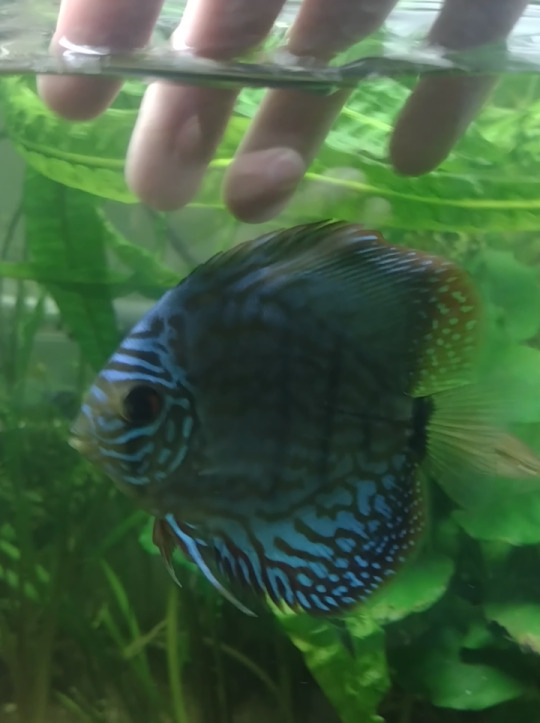
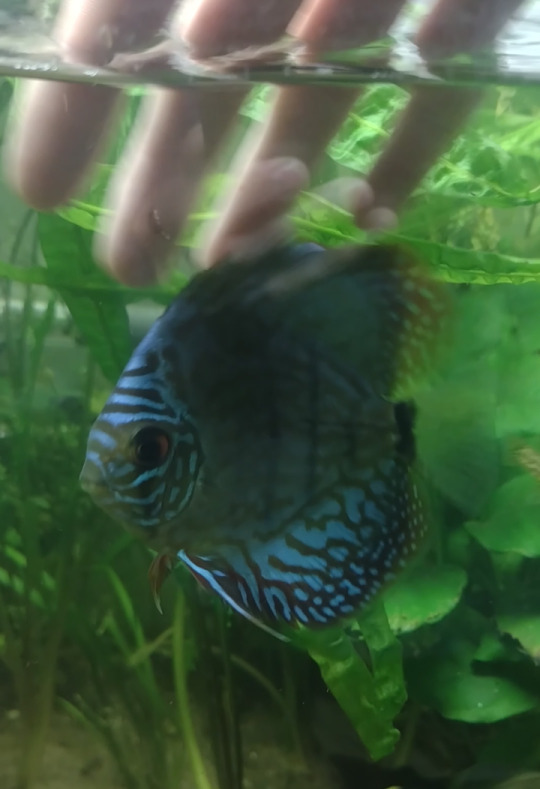
Good night dear one 💙
21 notes
·
View notes
Text
South American Cichlid Fish for Sale
Discover a stunning array of South American Cichlid Fish for Sale at Monster Aquarium. Dive into the vibrant world of these exotic aquatic wonders. From colorful species to rare finds, we offer a diverse selection. Enhance your home aquarium with these captivating additions. Explore the beauty of South American Cichlids with Monster Aquarium and bring a slice of the Amazon into your aquatic haven today.
0 notes
Note
what animal do you look forward to seeing when you visit an aquarium?
South American cichlids !!!!
0 notes
Video
Tiger Oscar | Astronotus ocellatus
#Tiger Oscar#Tiger Oscar Cichlid#cichlid#cichlidae#freshwater#underwater#nature#aquatic#aquaria#aquablr#aquarium#fish tank#fish#tank#planted tank#planted aquarium#aquascape#south american cichlid#marble cichlid#velvet cichlid#marine biology
25 notes
·
View notes
Text
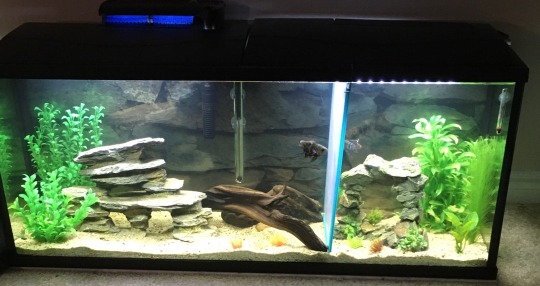
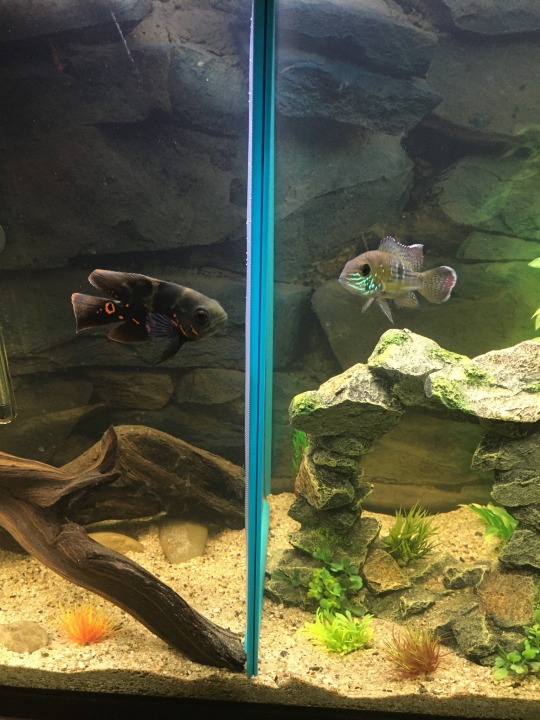


Havoc meets Malachite!
(divider for safety so they can both see/get used to each other before interacting and potentially fighting)
#fishblr#fishkeeping#tiger oscar cichlid#green terror cichlid#55g#aquarium#fish introduction#gt cichlid#oscar#cichlid tank#south american cichlid
7 notes
·
View notes
Text
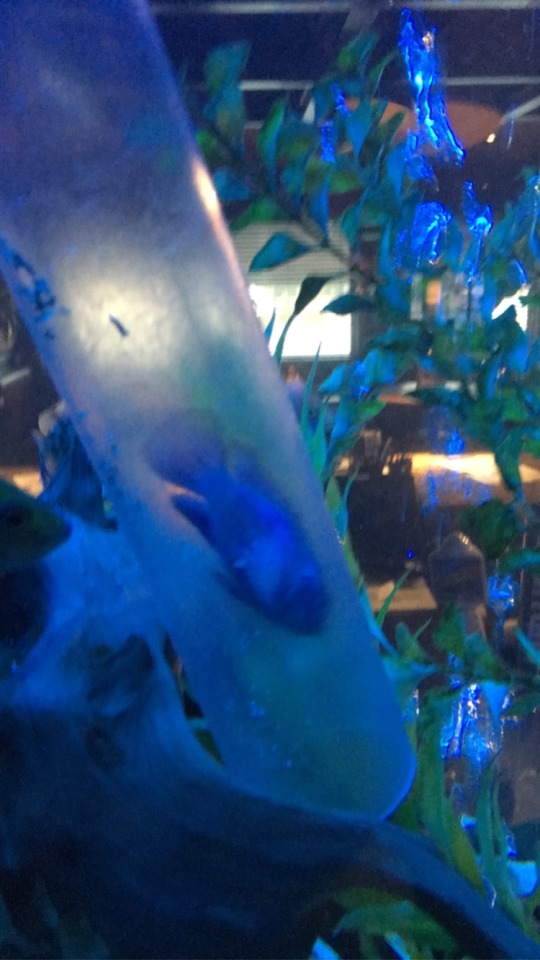
This is the most unbothered fish I’ve ever seen. I wish I was this calm. Dude swam in, up the tube, stopped and chilled, gave me a peace sign and then swam out. The highlight of my morning, 12/10 fish.
#fishblr#aquablr#fish tank#mine#cichlids#cichlid#cichlid tank#south american cichlid#cichlidblr#aggressive fish#fish tales from work#aquarium maintance#water change day
10 notes
·
View notes